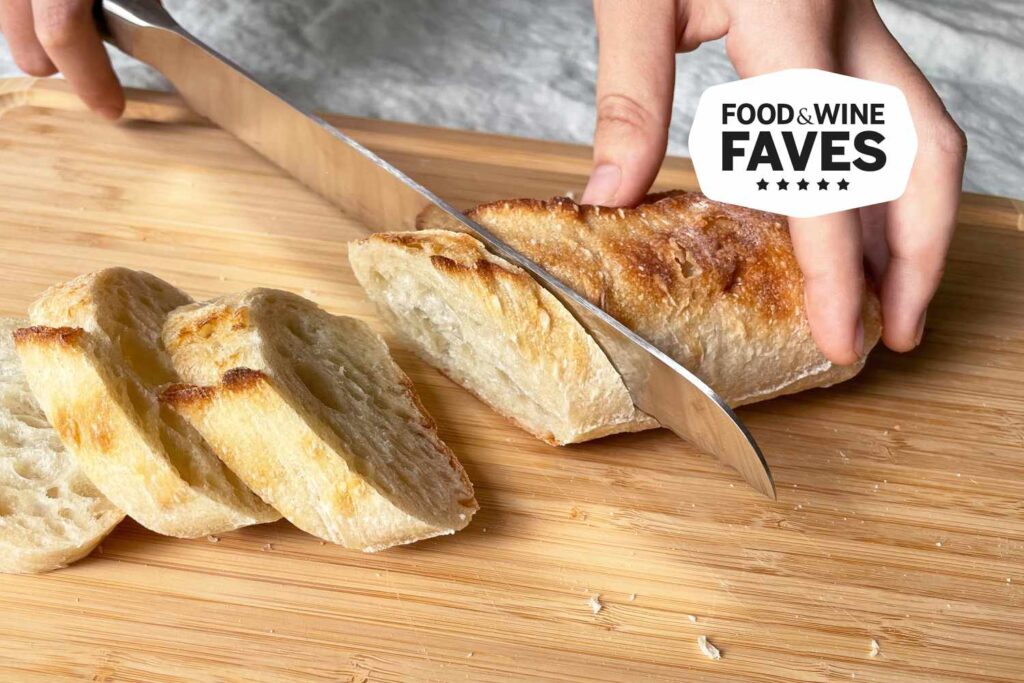Bread is a staple in many households around the world. Whether you enjoy a fresh loaf from the local bakery or bake your own at home, having the right tools is crucial for achieving perfect slices. That’s where bread knives come in. In this article, we will explore the importance of bread knives, their features, and how to choose the best one for your needs.
The Art of Slicing Bread
Slicing bread may seem like a simple task, but achieving uniform and clean slices can be challenging without the right knife. A bread knife is specifically designed to tackle crusty loaves and soft bread without crushing or tearing them. Its serrated blade ensures smooth cutting by sawing through the bread’s crust while maintaining the integrity of the soft interior.
The Anatomy of a Bread Knife
A bread knife consists of three main parts: the blade, the handle, and the tang. The blade is usually long and serrated, allowing for precise and effortless slicing. The handle provides a comfortable grip and control, while the tang, which extends into the handle, ensures stability and durability.
Key Features to Consider
When choosing a bread knife, several key features should be taken into account to ensure optimal performance.
Blade Length and Thickness
The length and thickness of the blade are crucial factors to consider. A longer blade enables you to slice through large loaves with ease, while a thinner blade ensures precision when dealing with delicate bread. Aim for a blade length between 8 and 10 inches and a thickness that strikes the right balance between flexibility and stability.
Serrated Edge
The serrated edge is the hallmark of a bread knife. The saw-like teeth grip the crust, allowing you to cut through it without applying excessive pressure. Look for a bread knife with well-defined serrations that are evenly spaced for consistent slicing.
Handle Design and Ergonomics
The handle of a bread knife should be comfortable to hold and provide a secure grip. Opt for a handle made of durable materials like wood, plastic, or stainless steel. Consider the ergonomics of the handle to ensure it fits your hand size and offers control during slicing.
Choosing the Right Bread Knife
With a plethora of options available, choosing the right bread knife can be overwhelming. Here are some factors to consider before making your decision.
Blade Material
Stainless steel blades are commonly found in bread knives due to their rust resistance and durability. High-carbon stainless steel is an excellent choice as it combines the strength of carbon steel with the corrosion resistance of stainless steel.
Blade Length and Size
As mentioned earlier, the blade length should be determined based on the type of bread you usually slice. Additionally, consider the size of the knife as a whole, ensuring it fits comfortably in your hand and allows for easy maneuverability.
Comfort and Balance
A bread knife should feel comfortable in your hand, reducing the strain on your wrist and arm. Look for a knife with a well-balanced weight distribution between the blade and handle, providing optimal control and reducing fatigue during prolonged use.
Maintenance and Durability
Consider the ease of maintenance and the knife’s overall durability. Ideally, choose a bread knife set that is dishwasher safe for convenient cleaning. Additionally, ensure the knife is made from high-quality materials to withstand regular use without losing its sharpness.
How to Properly Use a Bread Knife
To make the most of your bread knife, it’s essential to use proper techniques and follow safety guidelines.
Holding and Gripping Techniques
Hold the handle firmly with your dominant hand while placing your other hand on top of the blade, applying gentle pressure. This grip provides stability and control during slicing.
Slicing Techniques
When slicing bread, use a gentle sawing motion rather than applying excessive force. Let the serrated edge do the work for you. Start by positioning the knife at the top of the loaf and gradually move it back and forth while maintaining a consistent pressure.
Safety Precautions
Always exercise caution when handling sharp knives. Keep your fingers away from the blade and use a cutting board with non-slip padding to prevent accidents. When not in use, store the knife in a designated knife block or sheath to protect both the blade and yourself.


